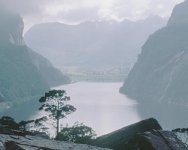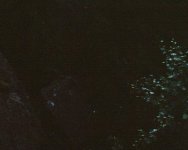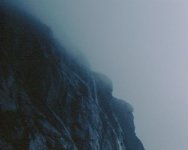bjolester
Well-known
I have a very nice Pentax 67ii system that I use in combination with 35mm film and a Pentax K-5iis dslr. Even though I love photographing with the large Pentax 67ii, I find film processing and scanning cumbersome and expensive. I shoot mostly Fuji Provia 100F and have to send my films to the ÚK for processing. I scan my medium format films on an Epson V750 flatbed, and besides being time consuming, the results from my V750 are not always satisfactory, especially with low light shots on slide film. Many times I wonder if I should just have photographed with the K-5iis instead...
I would appreciate some advice based on the images I include below. This image was shot with the Pentax 67ii and SMC 67 45mm f4 lens on Fuji Provia 100F scanned on an Epson V750 at 6400 ppi > reduce image size in photoshop with bicubic sharpen to 2400 ppi.
Do you think I would gain much by looking at a dedicated medium format scanner, like the Plustek 120, or by investing in a DSLR duping set-up?

Gloppedalsura 6x7 by bjolester, on Flickr
I would appreciate some advice based on the images I include below. This image was shot with the Pentax 67ii and SMC 67 45mm f4 lens on Fuji Provia 100F scanned on an Epson V750 at 6400 ppi > reduce image size in photoshop with bicubic sharpen to 2400 ppi.
Do you think I would gain much by looking at a dedicated medium format scanner, like the Plustek 120, or by investing in a DSLR duping set-up?

Gloppedalsura 6x7 by bjolester, on Flickr




